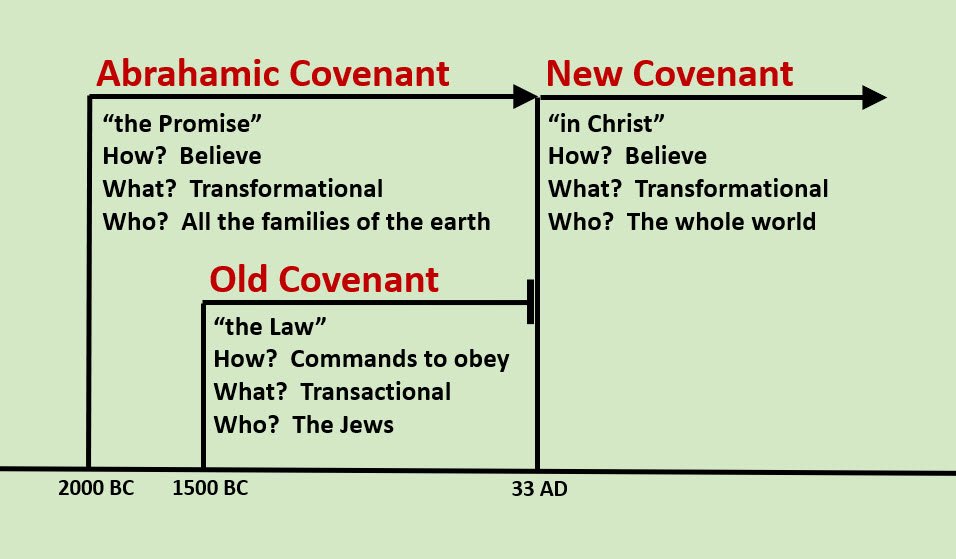“For it is written that Abraham had two sons, one by the bondwoman [Hagar] and one by the free woman [Sarah]. But the son [Ishmael] by the bondwoman was born according to the flesh, and the son [Isaac] by the free woman through the promise. This is allegorically speaking, for these women are two covenants” (Galatians 4:22-24).
The apostle Paul goes on to explain in Galatians chapter 4 that Sarah and Isaac are a picture of the new covenant while Hagar and Ishmael are representatives of the old covenant. How are Sarah and Isaac connected to the new covenant when they lived almost 2000 years before the new covenant came through Jesus Christ?
We will get back to that question, but let’s start with a look at an earlier covenant; a covenant prior to both the old and the new. Isaac is called a son of promise because his story is wrapped up in the promise of God to Abraham, a promise we refer to as the Abrahamic covenant. This covenant, first revealed in Genesis chapter 12 and repeated in various forms throughout Abraham’s lifetime, contains these highlights:
- It was a covenant based on God’s promise, not Abraham’s action.
- It was a promise to bless all the families of the earth, both Jew and Gentile.
- It was a promise fulfilled in the one who “believed”, not based on religious activity or behavior.
- It was a covenant that was transformational, not transactional.
- It was a covenant between God and God; Abraham was the beneficiary.
Does all of the above sound familiar? It certainly does! It sounds a lot like the new covenant, ushered in by Jesus. But before we search the riches of the connection between the Abrahamic and new covenants, let’s take a closer look at God’s covenant with Abraham. We will start there next time.

